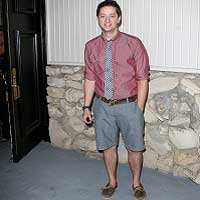Future of Antimicrobial Susceptibility Testing Market Insights

Antimicrobial Susceptibility Testing Market Overview
The antimicrobial susceptibility testing market is on an upward trajectory, with an estimated size of USD 3.87 billion in 2023, projected to grow to USD 6.04 billion by 2032. This growth is fueled by the rising incidence of infectious diseases and heightened awareness of antimicrobial resistance. As healthcare advances and the demand for precise diagnostics increases, the market is gearing up for substantial growth, predicted at a CAGR of 5.1% over the forecast period from 2024 to 2032.
Driving Forces Behind Market Growth
As we look into the driving factors, it is clear that the prevalence of drug-resistant infections is a major concern for global health. The market for antimicrobial susceptibility testing is experiencing heightened demand for rapid and reliable diagnostic processes. With advancements in diagnostic technologies, healthcare providers are better positioned to tackle infectious diseases effectively, ensuring timely treatments and improving patient outcomes.
Market Size Trends in the U.S.
In the United States, the antimicrobial susceptibility testing market is positioned at USD 1.50 billion as of 2023, with expectations to rise to USD 1.56 billion by 2032. The region remains a leader in the Antimicrobial Susceptibility Testing (AST) sector due to several factors: a high prevalence of antibiotic-resistant infections, stringent regulatory frameworks, and the adoption of advanced diagnostic tools. This robust market reflects an increasing focus on addressing the challenges posed by drug resistance.
Understanding Market Segmentation
Market segmentation offers crucial insights into various components shaping the antimicrobial susceptibility testing landscape. Key segments include:
- By Product: Manual tests have emerged as the dominant segment, representing 54% market share in 2023. Their affordability, ease of use, and wide acceptance in clinical laboratories make them highly popular, especially in developing countries where automated systems might not be feasible.
- By Application: The susceptibility testing segment, responsible for determining effective antimicrobial therapies, dominated the market with a 47% share. With the escalating incidence of multidrug-resistant organisms, this segment plays a critical role in clinical decision-making and patient care.
- By Technique: Disk diffusion methods captured 40% of the market share in 2023, lauded for their simplicity and reliability. These methods are favored in laboratories due to their established track record and minimal equipment requirements.
- By End-Use: Hospitals are the largest end-users, holding a 39% market share, driven by a surge in infectious diseases necessitating rapid diagnostics and treatments.
Market Dynamics and Key Players
A variety of key players shape the competitive landscape of the antimicrobial susceptibility testing market. Notable companies include bioMérieux SA, Becton Dickinson and Company, Thermo Fisher Scientific Inc., and others, whose innovations in testing technology are significantly impacting market growth.
Geographic Insights on Market Presence
North America currently leads the antimicrobial susceptibility testing market, holding a substantial 45% market share due to its advanced healthcare frameworks and significant investment in research and development. The region's comprehensive awareness and proactive regulatory measures in combating antimicrobial resistance underpin its leadership.
Interestingly, the Asia-Pacific region is emerging as the fastest-growing market, driven by increased healthcare access and the rise of drug-resistant infections. Countries like India, China, and Japan are enhancing their healthcare infrastructure and prioritizing early diagnosis, contributing to the expected surge in market growth.
Conclusion
In conclusion, the antimicrobial susceptibility testing market is set for substantial growth, influenced by the combination of rising drug-resistant infections and technological advancements. Stakeholders should focus on innovating and adopting efficient testing methods to meet changing dynamics and consumer needs in this critical healthcare domain.
Frequently Asked Questions
What is the projected market size of antimicrobial susceptibility testing?
The market is expected to grow to USD 6.04 billion by 2032, increasing from USD 3.87 billion in 2023.
What are the major factors driving the market growth?
The increasing incidence of infectious diseases and the prevalence of antimicrobial resistance are major growth drivers.
Which segment leads the antimicrobial susceptibility testing market?
The manual tests segment currently dominates the market due to its affordability and widespread application.
Where does the United States stand in the AST market?
The U.S. market is projected to grow from USD 1.50 billion in 2023 to USD 1.56 billion by 2032.
How is the Asia-Pacific region contributing to market growth?
The Asia-Pacific region is expected to show significant growth due to increased healthcare access and rising drug-resistant infections.
About The Author
Contact Logan Wright privately here. Or send an email with ATTN: Logan Wright as the subject to contact@investorshangout.com.
About Investors Hangout
Investors Hangout is a leading online stock forum for financial discussion and learning, offering a wide range of free tools and resources. It draws in traders of all levels, who exchange market knowledge, investigate trading tactics, and keep an eye on industry developments in real time. Featuring financial articles, stock message boards, quotes, charts, company profiles, and live news updates. Through cooperative learning and a wealth of informational resources, it helps users from novices creating their first portfolios to experts honing their techniques. Join Investors Hangout today: https://investorshangout.com/
The content of this article is based on factual, publicly available information and does not represent legal, financial, or investment advice. Investors Hangout does not offer financial advice, and the author is not a licensed financial advisor. Consult a qualified advisor before making any financial or investment decisions based on this article. This article should not be considered advice to purchase, sell, or hold any securities or other investments. If any of the material provided here is inaccurate, please contact us for corrections.
